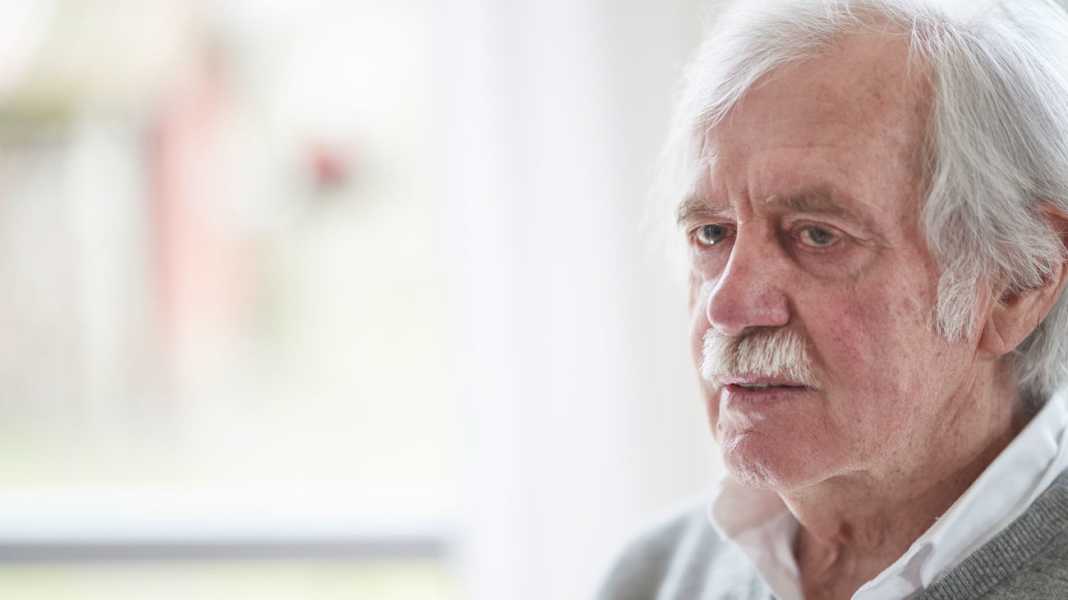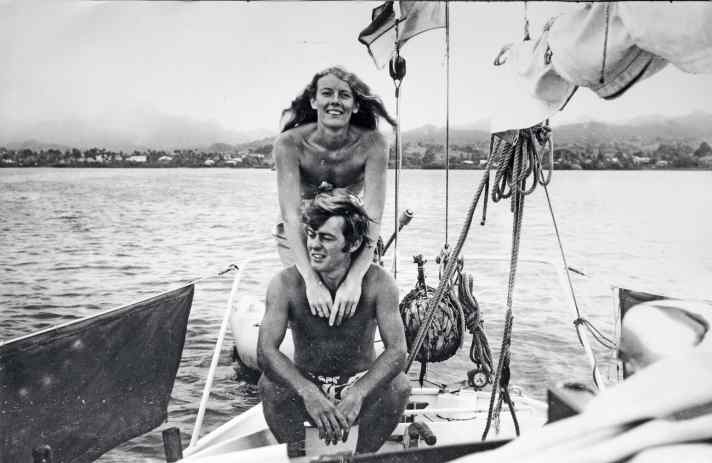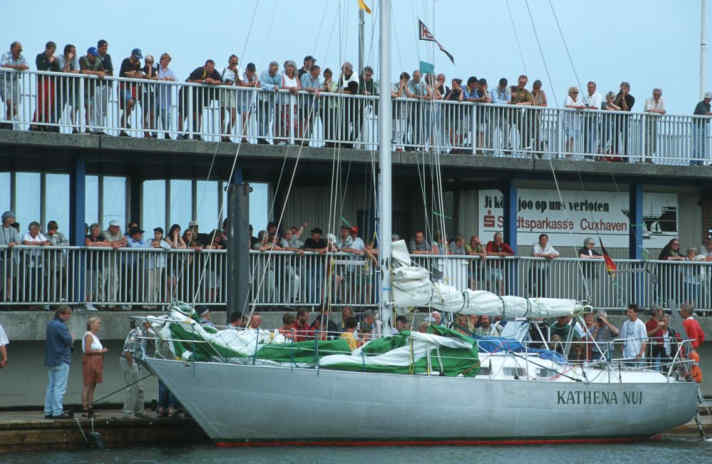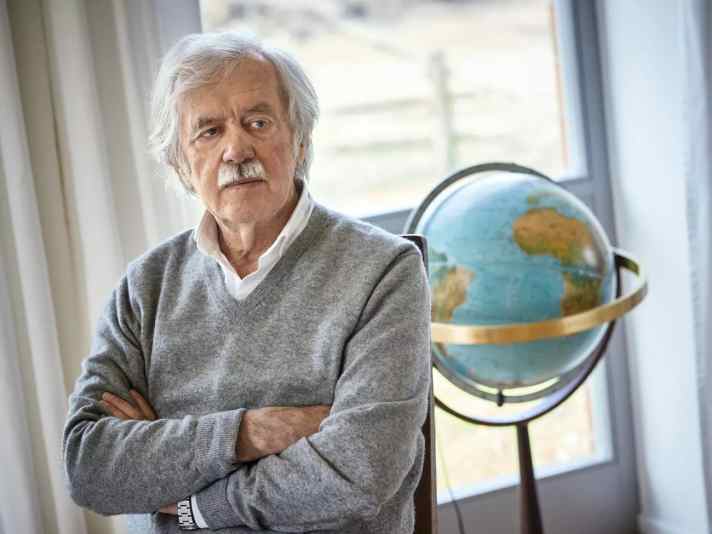
"The sea is white. Wind hard from the west. The breath of God accompanies me beyond Cape Horn. Shortly after midnight there's another knock-down, but I'm no longer as sensitive as a sea anemone, which, when you prick it, immediately curls up and trembles. At breakfast I even think: 'What only 7? Fair weather sailing, I have to go on deck and get out. Shortly afterwards, a breaker surprises me from aft in the cockpit. It fills the entire cockpit and washes over the deck to the centre of the superstructure. 'Don't do that now,' I shout at the waves. My socks have got wet after all."
A logbook entry by Wilfried Erdmann from "Die Magische Route" about a storm on 2 March 1985. In the book, he describes his greatest journey: single-handed and non-stop around the world on a boat only ten and a half metres long. As the first German. It would then take 35 years for Boris Herrmann to become the second German to achieve such a non-stop journey. Albeit with a boat almost twice as long.
Few men have had a more lasting impact on sailing in Germany than Wilfried Erdmann. As early as his mid-20s, he was the first German to sail single-handed around the world on his wooden "Kathena", which was only 7.60 metres long. His first book "Mein Schicksal heißt Kathena" was published at the end of the 1960s as a book for young people by Oetinger and DTV Junior, was in many school libraries and opened up not only a way onto the water for many young people, but also a subject area that they would probably never have discovered for themselves with a dinghy sailing book: the possibility of discovering the world with a boat.

This was followed by further spectacular voyages documented in well-illustrated books, such as the round-the-world voyage as a honeymoon with his wife Astrid (1969-1972), three years of "headwinds in paradise" on a trip with Astrid and son Kym from New Zealand to France (1976-1979) and then his greatest adventure, which was also the next logical step for Erdmann: sailing non-stop around the world (1984-1985). A journey that he even repeated many years later with the same boat. But then as a further increase, against the prevailing wind direction, from east to west through the Southern Ocean (2000-2001). A sporting achievement that few people have accomplished before or since.

For almost six decades, sailing and writing about it was his main purpose in life. At the age of 82, Wilfried Erdmann has survived countless storms and logged well over 150,000 nautical miles. A few years ago, he reactivated his motorless "Kathena Nui" after years of standing still and had a diesel engine installed so that he could spend his retirement from ocean adventures travelling the North and Baltic Seas. But now, in a post entitled "We have to give up sailing" on its website officially bid farewell to sailing.
"From boat to water with repairs, with sailing in general it was nothing," he writes in his review of the past summer, citing his health as the reason. "I was in a bad way. And in fact, I'm still ill." A lengthy hospitalisation and an operation are already behind him. Another very personal storm.

"We haven't yet decided what to do next," he summarises in his blog entry, self-critically summarising that he probably waited too long to make the decision to stop sailing. "Unfortunately, I missed the right time," he writes.
This post prompted countless comments and reactions from his fans and readers on Facebook. All of them encouraging, but also words of concern and expressions of respect. Many took the opportunity to simply say thank you to their childhood sailing hero and favourite author. For the achievements he has accomplished - and above all for the fire he has kindled in them through his role model function: to set sail themselves one day. "You and your voyages have enriched my life", it says, "You gave us dreams" and "You made me sail". His books taught and influenced many. The tenor of the comments is: "Even if you can no longer sail yourself, you will always be on board with us."
Read for yourself:

